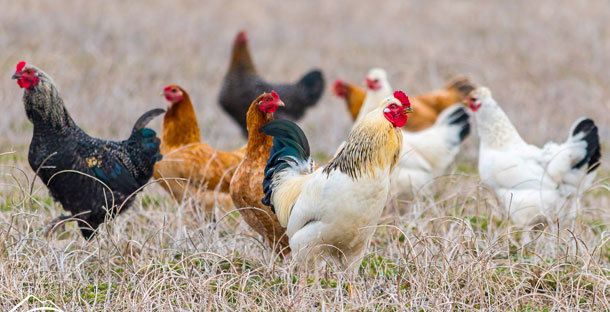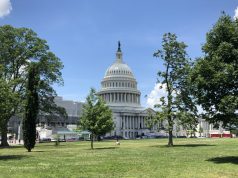
By: Nick Evans
Since the beginning of this year, Ohio poultry farmers have culled almost 11 million birds infected with avian flu according to data from the U.S. Department of Agriculture. In an update to state lawmakers, Ohio Poultry Association Executive Vice President Jim Chakeres said the virus has “wreaked havoc” on commercial flocks, particularly in far west Darke and Mercer Counties.
Ohio’s 2025 highly pathogenic avian influenza figures continue to outpace the rest of the country. The 10.9 million birds reported culled through of Feb. 14 is 4 million more than the next closest state — Indiana — and about half a million more than Ohio Capital Journal’s last report, which included USDA data through Feb. 10.
The virus has spilled from birds to cows and there have been 68 confirmed cases of bird flu in humans since the beginning of 2024. One of those cases was in Ohio, and another, in Louisiana, proved fatal. Still, state and federal health officials say there have been no incidents of person-to-person transmission and the public health risks remain low.
Chakeres told the Ohio House Agriculture Committee that farmers “are in the fight of their lives” but emphasized the positives all the same.
“I am somewhat hopeful as we may put this behind us, as our infection rate has slowed a bit in the past few days,” he said. “There is much more work to be done, but we see the light at the end of the tunnel.”
He noted they’ve gone two days in a row without reporting a new case, but he’ll feel much more comfortable “when we’ve got two weeks strung together.”
What they need
Chakeres stressed that his industry is relying on support from scientists working with the Ohio Department of Agriculture.
“We need more bodies in those seats now to run those laboratory tests,” he said.
In particular, he said, Ohio’s Animal Disease Diagnostic Lab is crucial in surveillance efforts, calling it their “first line of detection.” The lab is funded as part of the Ohio Department of Agriculture’s animal health programs. Construction on an expanded facility is underway but it isn’t expected to open until 2026. The department also has a separate, smaller fund in the state budget dedicated to poultry inspections.
In the governor’s initial spending plan, animal health programs would see a nearly 6% increase to just over $8 million in year one and then $8.2 million in year two. Poultry inspections would see modest increases in both years, landing just shy of $1 million annually.
Pressed by Rep. Joseph Miller, D-Amherst, on whether that funding is enough, Chakeres offered a blunt assessment.
“Bottom line, no, that is not enough money,” he said. “We need significant(ly) more funding there.”
“The lab is running 12 hours a day, six and seven days a week, and they can still do more,” he explained. “They are bringing in temporary workers. You know, we’re getting by, but in my opinion, and representing my farmers, getting by is not good enough.”
Meanwhile, staffing at the federal level is looking precarious, too.
Last Friday, new Agriculture Secretary Brooke Rollins announced an “aggressive plan to optimize (USDA’s) workforce” at the prompting of the Elon Musk-led Department of Government Efficiency. Over the weekend, the agency notified several staffers they were being let go, only to reverse course when it became clear they were working on avian flu response.
In a statement, a USDA spokesperson said, “Several job categories, including veterinarians, animal health technicians, and other emergency response personnel in USDA’s Animal and Plant Health Inspection Service (APHIS) have been exempted from the recent personnel actions to continue to support the (highly pathogenic avian influenza) response and other animal health priorities.”
“Although several APHIS positions supporting (avian influenza) were notified of their terminations over the weekend, we are working to swiftly rectify the situation and rescind those letters.”
The Capital Journal asked USDA if any of those staffers are based in Ohio, but agency representatives did not answer.
Vaccinations
Chakeres also made a simple plea that could have significant consequences.
“We need an (avian flu) vaccine for our birds,” he said.
He explained vaccinating poultry flocks presents challenges in implementation — there simply isn’t enough vaccine ready to go around — and in international trade.
“If we start vaccinating for this, in the eyes of our trading partners, then we are indeed — that disease has then become endemic to the United States,” he explained. “So therefore, if we are vaccinating any birds in the United States that are commercial poultry, we then lose some of that export opportunity.”
But at the same time, he argued it’s a “tremendous tool” in responding to the virus.
“Try to build a house without a hammer,” he said by way of comparison.
Some countries already vaccinate, and The World Organization for Animal Health contends vaccination shouldn’t be an impediment to international trade. Many importers, though, worry about accepting vaccinated poultry. Last month, for instance, the U.S. reduced trade restrictions it placed on France and the European Union in 2023 in response to their vaccination efforts.
Although the USDA granted a conditional license last week for an avian influenza vaccine, the agency has been reticent to embrace vaccination efforts. In 2016 it collected a vaccine stockpile and then never used it.
Chakeres argued federal trade officials need to advocate for acceptance of a vaccine “compartmentalization” approach, “which would allow egg and turkey farms to vaccinate,” he argued, “while hopefully protect(ing) the broiler trade. Chicken meat and products from unvaccinated birds should be accepted by all international trading partners.”










